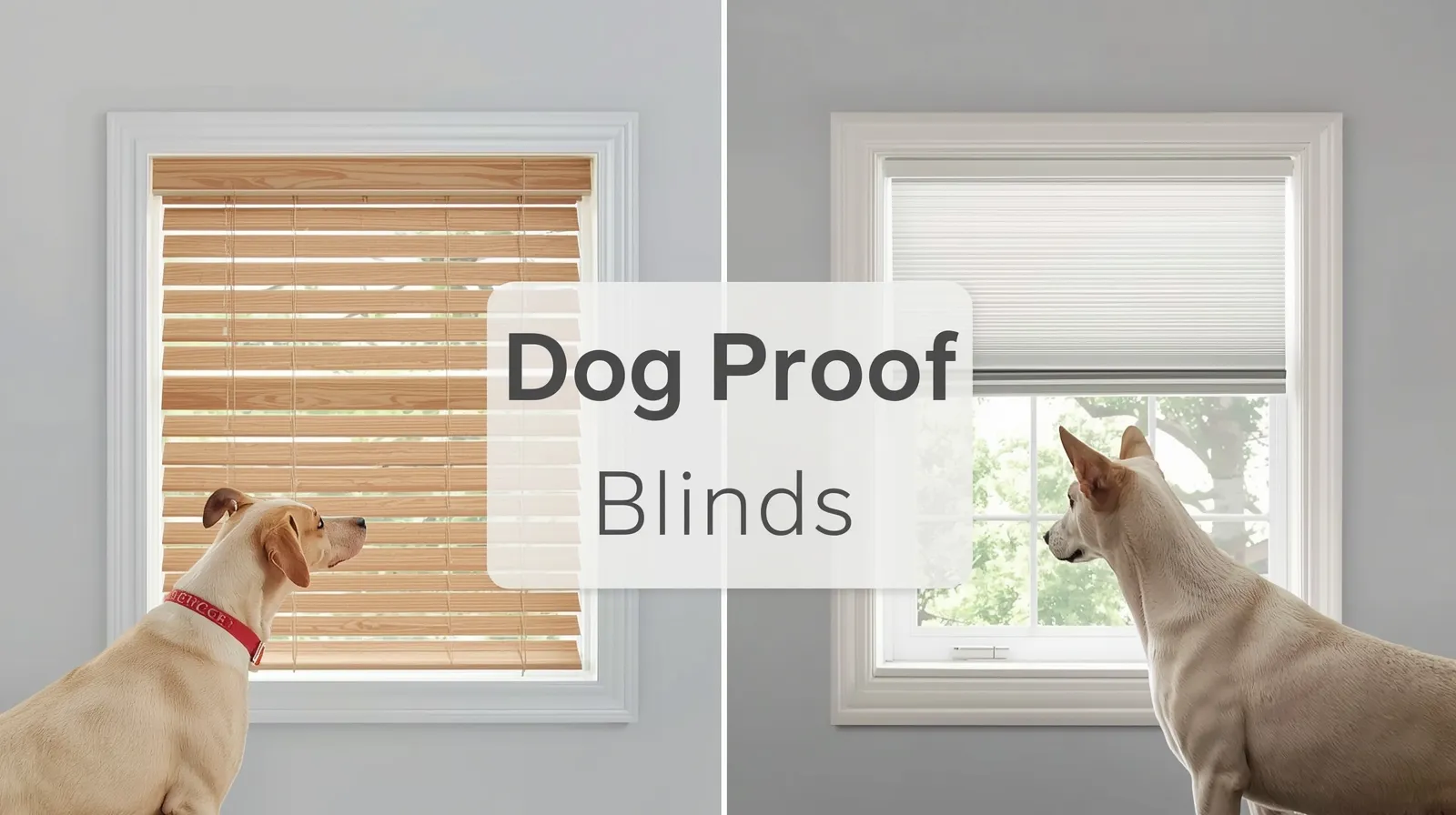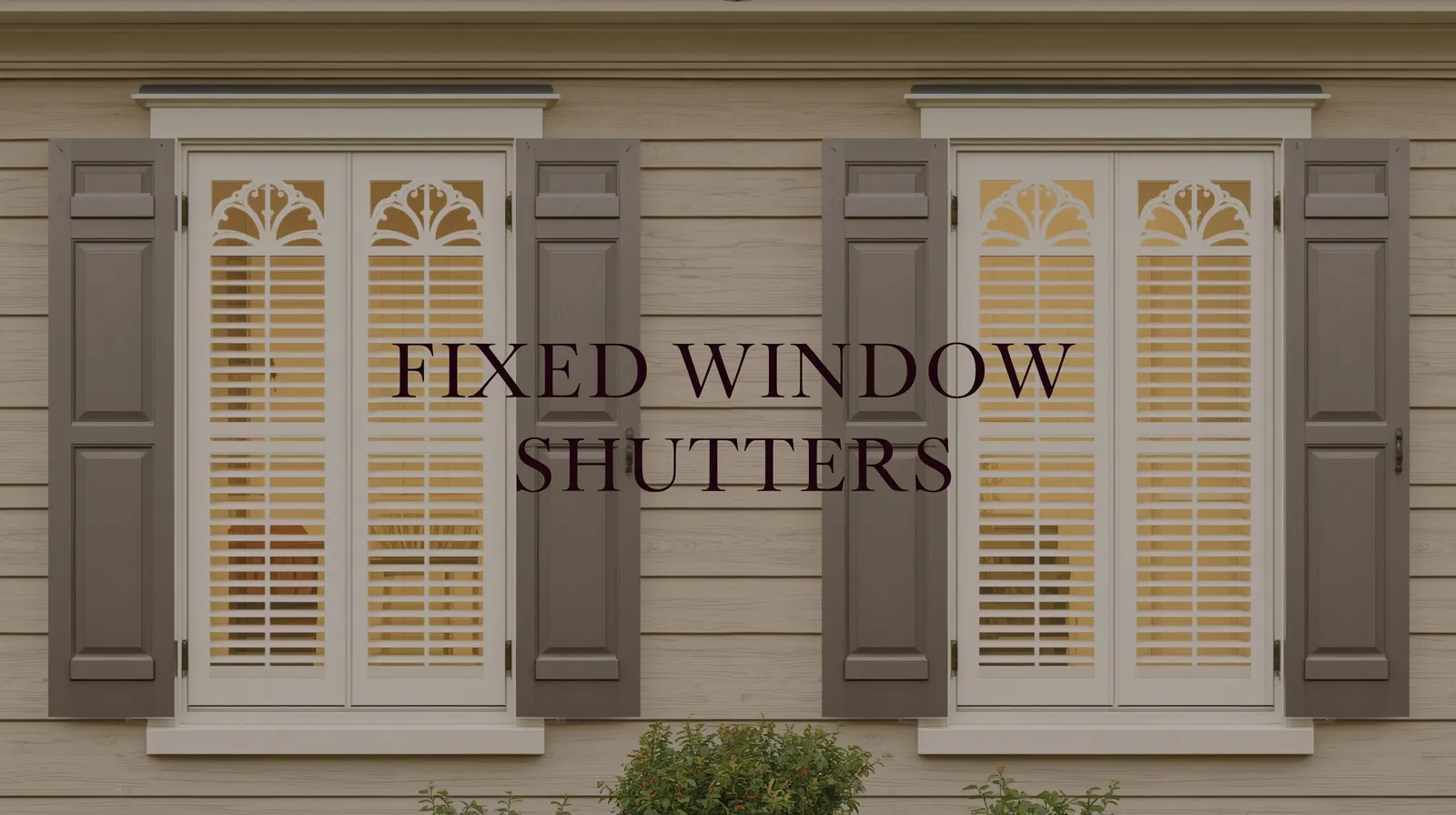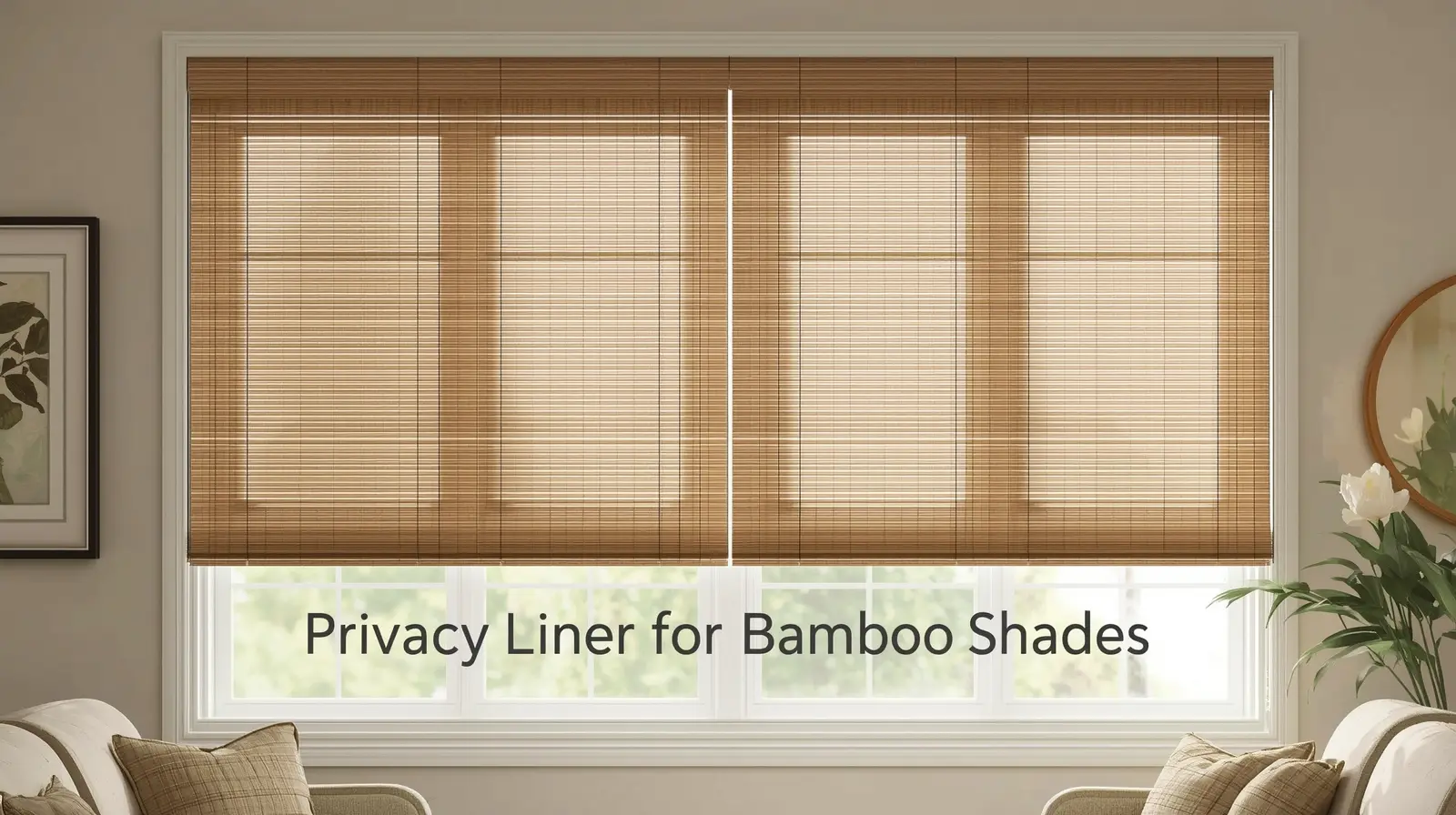Window treatments are coverings placed on windows to improve comfort, control light, and add beauty. They include blinds, shades, curtains, drapes, and other options that suit different needs. They are an essential part of home design because they mix function with style. In this guide, we’ll explain what are window treatments, explore their types, styles, names, and options, and provide simple tips to help homeowners choose the right ones.
Understanding the Basics: What Are Window Treatments?
Window treatments are simply the coverings that go over or around windows. They can be soft, like fabric curtains, or hard, like wood blinds. The main purpose is to manage how much sunlight enters a room, give privacy, and decorate the space.
So, what are window treatments in clear terms? They are solutions that make windows more useful and attractive. For example, blinds allow you to tilt slats to block or filter sunlight. Curtains bring warmth to a room while keeping out unwanted views. Shades roll up neatly, giving a modern, simple look.
Beyond beauty, they protect furniture and flooring from sun damage. They can even save energy by keeping heat in during winter and blocking heat during summer. That is why window treatments are considered both a design choice and a practical investment.
Why Window Treatments Matter in Home Design
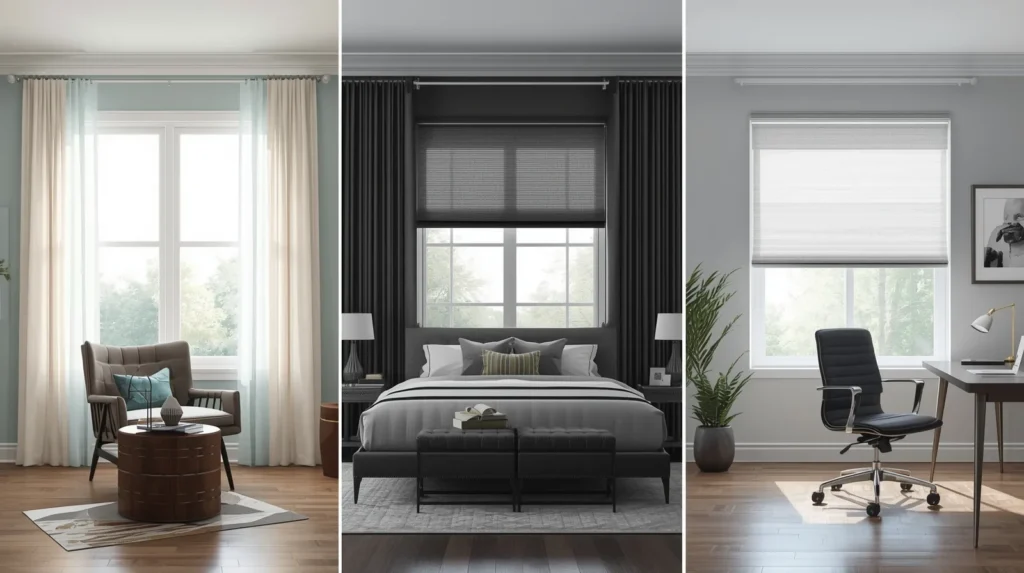
A home without window treatments often feels unfinished, almost like it’s missing the final touch. Coverings bring balance and style, helping connect furniture, walls, and floors into a complete design.
They also affect mood and comfort. Sheer curtains, for example, soften natural light and create a calm atmosphere. Blackout drapes, on the other hand, make bedrooms restful by blocking light and noise. Roller shades bring a clean and modern look, perfect for offices or minimal spaces.
Window coverings also add privacy. With the right treatments, you can enjoy your home without feeling exposed to neighbors or passersby. They also control glare on screens, making them a smart choice for living rooms and workspaces. Whether casual or formal, window coverings help define the feeling of a room.
What Are Window Treatments and Different Window Treatments You Can Choose
When people ask, “What are window treatments?” the answer is simple: they are coverings that protect and decorate windows. Yet, there are many kinds, each with its own strengths.
Here are the most common different window treatments you can choose:
- Blinds – Available in wood, faux wood, and aluminum, blinds use horizontal or vertical slats. They’re easy to clean and excellent for light control.
- Shades – Made from fabric, they roll, fold, or pleat in different styles. Options include Roman shades, roller shades, and honeycomb shades.
- Curtains – Light fabric panels that hang from a rod. They’re often used in casual spaces or layered with heavier drapes.
- Drapes – Thicker, lined fabrics that add elegance and insulation. They’re ideal for bedrooms and formal living rooms.
- Valances – Short coverings that sit at the top of windows. They add charm and are often combined with blinds or shades.
Each treatment serves a different purpose. Blinds work well in kitchens and offices, shades are versatile in living spaces, and drapes bring luxury.
Exploring Types of Window Treatments for Every Room
Every room has its own needs when it comes to coverings. Choosing the right type helps the room feel comfortable and practical.
- Bedrooms – Blackout drapes or shades are best because they block sunlight and improve sleep. Some even reduce outside noise.
- Living Rooms – Layered curtains with sheer and blackout panels allow both daytime light and nighttime privacy. Roman shades also look stylish.
- Kitchens – Blinds and roller shades are popular since they’re easy to clean and resist moisture. Faux wood works well near sinks.
- Bathrooms – Vinyl or faux wood blinds are perfect because they resist humidity while still giving privacy.
- Home Offices – Light-filtering shades or cellular shades reduce glare on screens but keep the room bright.
When exploring types of window treatments, think about function first. A decorative choice that doesn’t meet daily needs will soon feel inconvenient.
Window Treatment Options: Finding the Right Fit
With so many window treatment options, it helps to narrow down based on your goals. Do you need privacy, light control, or energy savings?
- For privacy, choose blinds, lined drapes, or cellular shades.
- For light filtering, go with sheers or solar shades.
- For energy efficiency, cellular shades and thick curtains are great insulators.
- For easy care, roller shades and vertical blinds are low-maintenance.
Budget also matters. Basic vinyl blinds are cost-effective, while custom draperies or motorized shades are premium options. No matter the budget, there is always a treatment that balances function and style.
Names of Window Treatments You Should Know
Learning the names of window treatments makes shopping and decision-making easier. Here are a few key ones:
- Roman Shades – Elegant fabric shades that fold as they rise.
- Cellular or Honeycomb Shades – Known for energy-saving design with air pockets.
- Roller Shades – Simple fabric that rolls into a small tube.
- Venetian Blinds – Classic horizontal blinds with tilting slats.
- Vertical Blinds – Long vertical slats, often used for sliding glass doors.
- Sheer Curtains – Lightweight fabric that softens sunlight.
- Blackout Drapes – Thick, lined drapes that block light completely.
By understanding these names, homeowners can better match products to their needs.
Window Treatments Styles That Match Modern Living
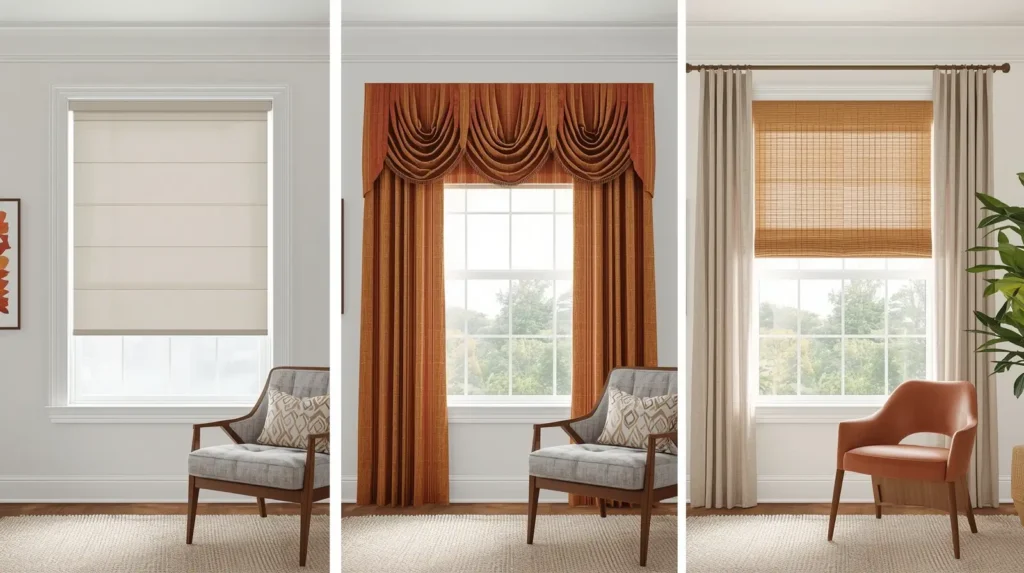
Style is just as important as function. Today’s window treatments styles offer options for every taste.
- Modern Minimalist – Roller shades, motorized blinds, and neutral fabrics give a sleek look.
- Traditional Elegance – Layered drapes with valances bring warmth and depth.
- Rustic or Natural – Bamboo shades or linen curtains add organic charm.
- Casual Comfort – Roman shades in soft colors or simple curtains create a relaxed feeling.
- Smart Homes – Motorized shades and blinds that connect to apps provide convenience and energy savings.
Mixing styles is common. For instance, pairing sheer curtains with blackout panels lets homeowners adjust for different times of day.
Parts of a Window Treatment Explained Simply
Every window covering has parts that make it function well. Knowing these helps with setup and repairs.
- Headrail – The top frame that supports the treatment.
- Slats or Fabric Panel – The main body of the blind or shade.
- Cord or Wand – Used to raise, lower, or tilt. Some modern designs are cordless for safety.
- Brackets – Hardware that attaches the treatment to the wall or frame.
- Valance or Cornice – A decorative cover at the top to hide hardware.
Understanding the parts of a window treatment makes cleaning and adjustments much easier. It also helps when discussing needs with professionals.
Interior and In-Home Window Treatments for Comfort
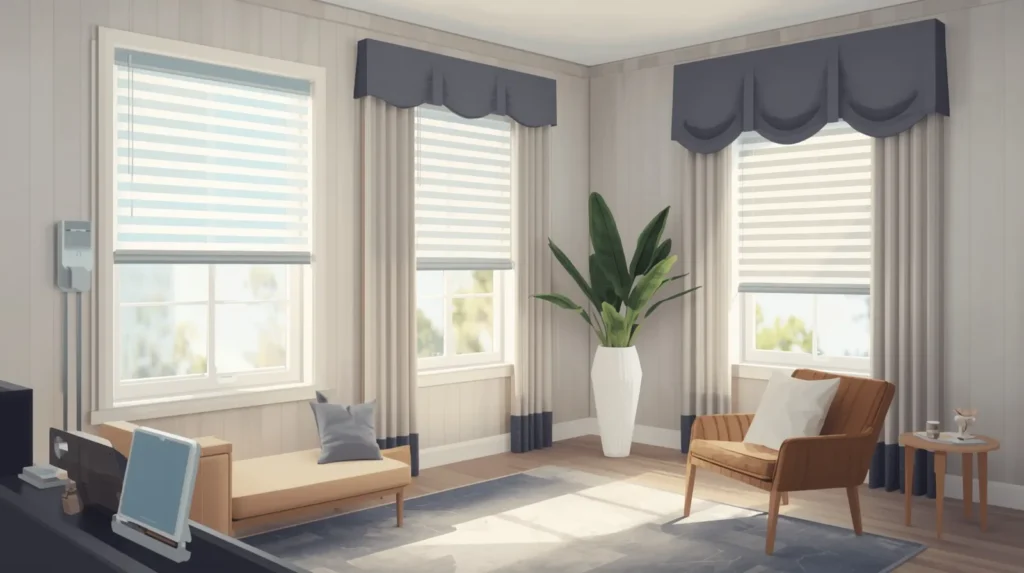
Interior window treatments are installed inside the home to control privacy, block light, and enhance décor. These include blinds, shades, drapes, and valances. They are practical and decorative at the same time.
In-home window treatments also include advanced options such as motorized blinds, cordless shades, and layered curtains. These modern designs make life easier. For example, motorized shades can be scheduled to rise with the sunrise. Cordless designs improve child safety.
Comfort goes beyond looks. Treatments insulate against heat, reduce noise, and prevent sun damage. By upgrading, homeowners improve daily living without major remodeling.
Residential Window Treatments Trends in Norco, CA
In Norco, CA, residential window treatments reflect both style and comfort. Many families prefer cellular shades because they insulate against changing temperatures. Roller shades remain popular for their clean look, while layered drapes bring a touch of elegance.
Eco-friendly designs are trending. Bamboo shades and linen curtains appeal to those who want natural materials. Motorized treatments are also on the rise, offering remote or phone-based control.
Local experts like JMR Blinds guide homeowners through these choices, helping them find treatments that balance cost, design, and durability. This makes every window a functional part of home design.
How to Choose the Best Window Treatments for Your Space
Choosing the right window covering begins with asking simple questions. Do you need more privacy? Do you want more natural light? Do you prefer modern or classic styles?
If you need low-maintenance, go for roller shades. For luxury, consider drapes. For energy savings, try cellular shades. For flexibility, layer sheer and blackout panels. Always measure carefully to ensure the right fit.
Getting advice from professionals ensures better results. With support from JMR Blinds, homeowners can find coverings that match décor, fit windows perfectly, and provide lasting comfort.
Conclusion
Window treatments are coverings that make windows both functional and stylish. They include blinds, shades, drapes, curtains, and valances, each serving different roles in privacy, energy savings, and design. Knowing the options helps homeowners choose what fits best for each room.
Looking to upgrade your windows? Explore styles and options that match your lifestyle and turn every room into a more comfortable, private, and beautiful space.

